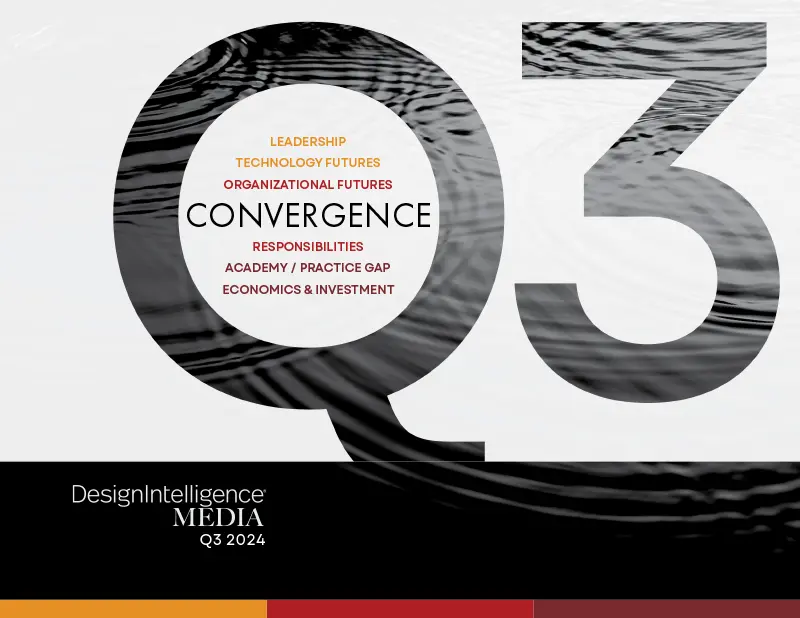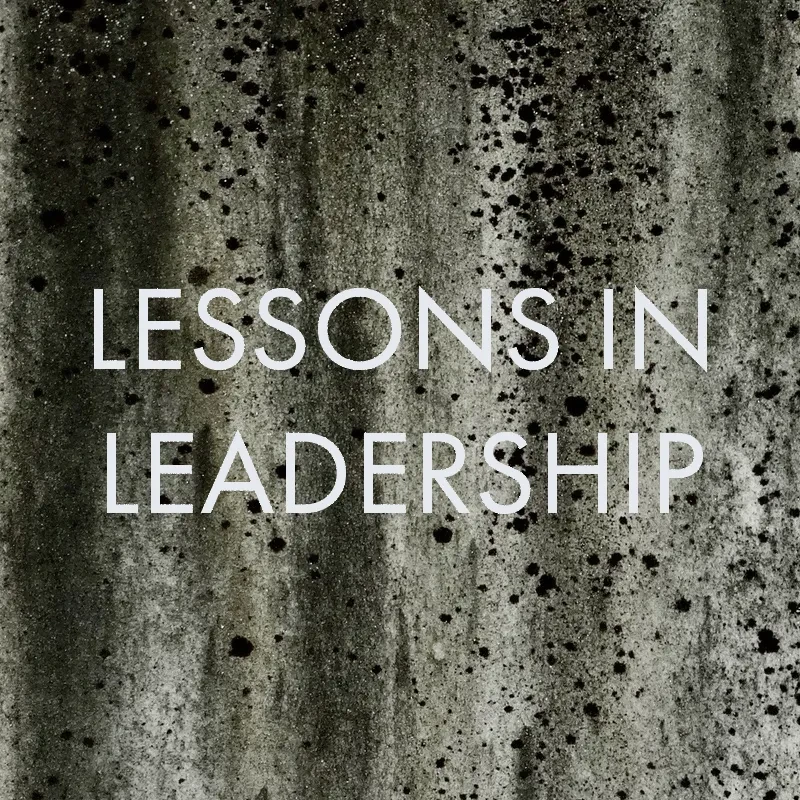
Context: Convergence
Michael LeFevre
Managing Editor, DesignIntelligence
September 25, 2024
As long ago as 1962, now more than 60 years, Rachel Carson reminded us: “In nature, nothing exists alone.” “We in this generation, must come to terms with nature, and I think we’re challenged as mankind has never been challenged before to prove our maturity and our mastery, not of nature, but of ourselves.” - Rachel Carson, Silent Spring, 1962
But how do we approach this “obligation to endure” as she called it.
As leaders, we face many competing interests. Those of our firms versus larger societal and planetary demands. Self-imposed, yet necessary deadlines as in the AIA’s 2030 Challenge. Moral and social imperatives to rebalance the diversity, equity and inclusion within our organizations and profession. But how do we cope with these multiple divergent paths? By bringing them together. By connecting and prioritizing them. In short, by converging.
It is said that writers write. In a parallel mandate, architects design. But we must change our exclusionary ways. In every design decision we make we decide not only what to include but also what to leave out. This has historically been the designer’s purview. In making such decisions, the designer brings “order from chaos.” But the writers have written. The words are on the wall. As we designers design into the future, we must get better at the art of being inclusive, connective and synergistic. We have too long suffered from the fascination with the current of our own emotions and the allure of design. Without letting go of design’s draw when the white lights of design call, we must see clearly and no longer be blinded. Think of it as a consolidation of skills and responsibilities.
Many leaders of the built environment have yet to assume such broader challenges. They don’t think they are their responsibility. Far from it. But that must change.
The questions are many in our quest for convergence. Do we have the audacity? The panache? Can we control our emotions to mark ourselves in that way? Can we grant reciprocity to alternate views and constituents outside our circles? This is life. Things circulate. They evolve. Can we use our holistic skills to stop being – and causing others to be – victims? To synthesize our broader set of challenges through a design ethos? I believe we can, and so we explore Convergence in this issue of DesignIntelligence Quarterly.
This Q3 compilation continues our yearlong investigation of six annual DesignIntelligence focus areas. They are:
-
Leadership
The Business of Design, Resilience -
Technology Futures
Artificial Intelligence, Applied Research, Innovation -
Organizational Futures
New Organizational Forms, Alliances, Work, Workplaces, Value Propositions & Business Models -
Responsibilities
Global / Regional / Local, Motivations & Incentives (Group & Individual), Housing, Homelessness, Society, Civility, Income Gaps, Climate Change Dynamics, Sustainability & The Environment -
Academy / Practice Gap
Trans industry & Transdisciplinary Collaboration, Professional Education, Development & Continual Learning, New Skills, Talent) -
Economics & Investment
Finance, fiscal responsibility, geopolitical issues
…to remain relevant and resilient.
Without letting go of design’s draw when the white lights of design call, we must see clearly and no longer be blinded. Think of it as a consolidation of skills and responsibilities.
As always, we invite a strong slate of industry thought leaders to contribute. Some chose to tackle more than one of these subjects. The common idea in this Quarter’s offerings? Convergence. Specifically, here’s what you’ll find inside this issue of DI Quarterly from our DesignIntelligence contributors:
DeeDee Birch leads off with an essay entitled Convergence: Buildings, Biology and Symbiosis.
In The Tortoise and the Hare, economist Bob Hughes provides a midyear update and analysis on financial and geopolitical events.
Scott Simpson looks at long-term horizons and buildings as storytellers in Taking the Long Term View.
Erika Moody’s interview Leading Lines looks at discipline convergence and the future.
From CO architects, Chikara Inamura shares case studies of his firm’s recent office expansion in his analysis, The Digital Twin: Planning the Future of Workplace Design, an account of how BIM converges with 3D scanning, a game engine, and the internet of things to create a highly adaptable office informed by quantifiable metrics.
In Disasters, Dictators or Data? HOK Chairman emeritus and cofounder of the buildingSmart alliance, Patrick MacLeamy suggests data and AI as the way forward for smart cities.
DI CEO Dave Gilmore gives us Interdependent Convergence, an examination of intention, synthesis, systems and inclusion as value sources for the profession.
Rob Otani examines “the new electricity” and its applications his article entitled The AI Revolution in AEC.
Paul Hyett posits a desperately needed new building type to house the homeless in his essay The Myth of the Undeserving Poor, and asks: Can we do the right thing?
Enarche CEO Dez Joslin shares her advice on the integration of business development, marketing and practice in her piece Three-Part Harmony: The Winning Dialogue.
My essay, Coming Together examines decision scales ranging from individual to global and beyond in our quest to integrate thinking.
With the best these remarkable thinkers have to offer in hand and in mind, let’s embark on a journey of discovery - and convergence - together.
Michael LeFevre, managing editor
Michael LeFevre, FAIA emeritus, managing editor, DI Media Group; principal, DI Advisory; senior fellow, Design Futures Council
2024 Q3 Book Contributors
Context: Convergence - Michael LeFevre
Interdependent Convergence - Dave Gilmore
Coming Together - Michael LeFevre
Taking the Long View - Scott Simpson
The Myth of the Undeserving Poor - Paul Hyett
Three-Part Harmony: The Winning Dialogue - Dez Joslin
The AI Revolution in AEC - Robert Otani
The Digital Twin: Planning the Future of Workplace Design - Chikara Inamura
Leading Lines - Erika Moody
Convergence: Buildings, Biology and Symbiosis - DeeDee Birch
Disasters, Dictators or Data? - Patrick MacLeamy
The Tortoise and the Hare - Bob Hughes










